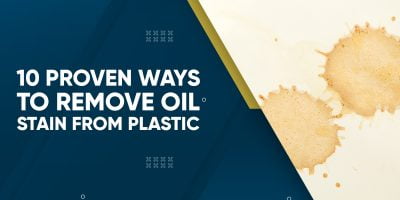The durability of a well-maintained cast-iron skillet is a major selling point for this cooking tool. Additionally, a rusty cast-iron skillet is not something you should toss away because it may be easily restored. In this context, Best Mama Kitchen will show you how to clean & season a cast-iron skillet.
One of the greatest ways to prepare tasty food is in a cast-iron pan. Keep reading to find out how to avoid rusting your cast-iron skillet by proper cleaning and other precautions.
After hearing the laundry list of things you shouldn’t do while caring for a cast-iron skillet, many consumers decide against purchasing one.
Table of contents
Estimated reading time: 7 minutes
How to Clean a Cast-Iron Skillet?
Before washing a cast-iron skillet, make a list. A Scrub brush, paper towels, and vegetable oil are needed. Stove and kosher salt can be used instead.
Time needed: 20 minutes.
5 Steps to Clean a Cast-Iron Skillet
- Clean While It Is Hot
Cleaning the skillet while it’s still hot or heated from use is a must. In addition, you should never submerge the skillet in soapy water or the sink since this might cause rust.

- Use a Stiff Brush to Scrape the Food
Scrape the food remnants from the skillet’s surface using a stiff brush, sponge, and hot water. Wear gloves if the water is too hot.

- Use Boil Water
A thick mixture of coarse kosher salt and water can be used as a scrub if a brush or scraper is ineffective. Water can be boiled in the skillet to remove baked food from the pan.

- Use Paper Towel
The cast-iron skillet may be cleaned by washing it, rinsing it, and drying it with a paper towel. You may heat the skillet on low to remove any remaining liquid.

- Final Phase
Finally, cover the pan’s interior with vegetable oil using a paper towel or dry cloth. Coating the interior and exterior of the skillet will help prevent it from rusting, which is another benefit.

Best Cast-Iron Skillet Cleaning Tools
Lodge Scrub Brush
The plastic-headed Lodge Scrub Brush with nylon bristles is an excellent option for scrubbing your cast-iron skillet or another cooking utensil. Also, the rubber hardwood handle is ten inches long, providing the leverage needed to reach a pan’s crevices.
Buy at Amazon: Lodge Care Scrub Brush.

Cast Iron Brush and Scraper
The items are firmer than those of a Lodge scrub brush. This robust brush is perfect for scraping away the stubborn burned-on pieces.
The brush bristles are fortunately made of BPA-free recyclable plastic from bamboo.
Buy at Amazon: Full Circle Tenacious C Cast Iron Brush and Scraper.
Polycarbonate Red and Black Pan Scraper
You may use the Polycarbonate Red and Black Pan Scraper to clean any cast-iron cookware, thanks to its four varied curved corners. More so, these polycarbonate scrapers are useful for removing baked-on particles.
To make scraping the pan easier, experts recommend heating the pan first.
Buy at Amazon: Lodge Polycarbonate Red and Black Pan Scraper.
Stainless Steel Cast Iron Cleaner
Stainless Steel Cast Iron Cleaner’s innovative extra-large design incorporates rust- and corrosion-resistant chainmail.
This chainmail scrubber can fold and bend to clean pan creases without harming seasoning thoroughly.
Buy Here: The Ringer – The Original Stainless Steel Cast Iron Cleaner.

Use a Rust Eraser
Cast-iron skillets may be restored to like-new condition by using the Rust Eraser. In addition to being effective in removing rust and tarnish, it is also highly precise.
You may use the rust eraser without worry when recovering a rusty skillet, although you may lose some seasoning. It can be seasoned after the fact if necessary.
Finally, the Lodge rust eraser should not be used on hot cookware, including cast iron and copper.
Buy Here: Lodge Rust Eraser.
How to Add Flavor to a Cast-Iron Pan
If you want to season a cast-iron skillet properly, you’ll need the following items on hand:
- Mild dish detergent.
- Use a scrub brush or a sponge with some heft to it.
- A piece of dry fabric or some absorbent paper toweling.
- Animal-free oil.
- This uses aluminum foil.
Now that you have everything you need, you can clean a cast-iron pan in the oven at 350 degrees F:
- You may clean the skillet with a sponge and some soapy water. Even though we’re all well aware that a cast-iron skillet doesn’t require washing before being seasoned, we’ll do so.
- After cleaning, dry the pan with a towel or cloth. Make sure no water remains.
- The pan can be prepared with one or two teaspoons of vegetable oil. Further, any melted shortening will do.
- The skillet’s surface should be evenly coated with oil, so use a paper towel and a clean cloth. Coating the exterior and bottom of the pan is also important.
- Put the aluminum foil under the rack to catch any spilled oil.
- Put the skillet in the oven and bake it for at least an hour.
- Finally, please turn off the heat and allow the skillet to cool fully in the oven before removing it.
- If the surface of your cast-iron skillet is bright and smooth, it has been properly seasoned and will not stick to your food.
Season the pan or skillet if you notice that food is sticking to it or if it looks rusty or dull.
Cast-Iron Skillet Seasoning: Extra Notes
- It’s easier to remove stuck-on food from a heated cast-iron skillet.
- Soaking the skillet in water causes corrosion and rust.
- Cast-iron skillets shouldn’t be cleaned with strong chemicals or soap.
- Kosher salt and water paste remove food best. You can scrub the pan with a moist sponge and rinse warm water.
- If you don’t wash the skillet with soap, heat it at 212F. It’s great for sterilizing cast-iron skillets.
Bottom Line
A cast-iron pan is the best option for searing pork chops and browning chicken thighs to a perfect crisp. Nonetheless, there is some disagreement on whether soap or a paper towel is better.
As a result of reading the preceding, you now understand how to season, clean, and wash a cast-iron skillet. In addition, you have a firm grasp of the optimal cleaning methods and their respective application contexts.

Read More:




